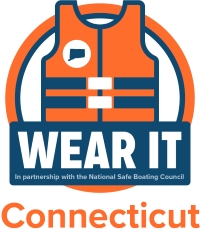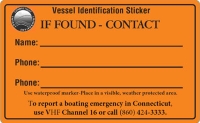Paddling in Connecticut
Whether you choose canoeing, kayaking, rowing or stand-up paddleboarding (SUP), Connecticut offers many locations for you to enjoy.
Where to Paddle
Flatwater and Coastal Areas:
- Connecticut State Parks (rentals are available at 3 state parks/ bring your own at many others)
- State Boat Launches
- Connecticut Coastal Access Guide
- Connecticut Water Trails Map (Rivers Alliance of Connecticut)
Whitewater:
Getting Started
Take a lesson!
Before venturing out on the water, consider taking a paddling course, the time and money
you spend are well worth the investment! Knowing how to dress, the correct paddle strokes, the navigation rules, what equipment you should have with you on the water and how to use it, what to do in an emergency, being able to right and get back in your boat if you capsize are all skills that may lengthen your season and add to your boating enjoyment. Many of the paddling related accidents and deaths in Connecticut might have been eliminated had the victims received some form of education.
you spend are well worth the investment! Knowing how to dress, the correct paddle strokes, the navigation rules, what equipment you should have with you on the water and how to use it, what to do in an emergency, being able to right and get back in your boat if you capsize are all skills that may lengthen your season and add to your boating enjoyment. Many of the paddling related accidents and deaths in Connecticut might have been eliminated had the victims received some form of education.
At a minimum, take an online course.
- The Free Paddle Sports Safety Course (Course sanctioned by the National Association of State Boating Law Administrators andrecognized by the U.S. Coast Guard)
- Also check:
Nothing beats an on-water skills class. Many organizations/outfitters offer on-water classes. Some to check are:
- American Canoe Association (ACA)
- ConnYak
- Your local outfitter
Safety While Paddling
Top 5 Safety Tips:
- Wear your Life Jacket! A life jacket should be worn at all times. Once you are in the water, it is almost impossible to put it on..
- Paddle with a friend or group. You will have someone that can help you get back in your boat or call for help if needed
- Beginning paddlers should paddle close to shore.
- Dress properly for paddling
- Paddle in quiet/non-congested areas. Familiarize yourself with the waterbody you plan on enjoying to ensure you know about potential hazards (i.e. low head dam, rapids).
Other important safety reminders:
- Put Contact Information ("IF FOUND" Sticker) on Your Kayak, Canoe, Paddleboard or other Unregistered Boat
The "IF FOUND" sticker was designed to help save lives, recover missing property, and reduce the time, effort and resources expended on non-emergency search and rescues. These are available free from the DEEP Boating Division. More Info
- Do NOT paddle impaired
- Do not drink alcohol or use drugs with serious side effects before or while paddling. These substances can reduce reaction time, balance, coordination, and judgment - all of which are vital to your survival in a threatening situation.
- Know your ability
Be honest with yourself when planning a trip. Rough water, white water, or rapids can be difficult for experienced paddlers and are no place for beginners. Check the weather forecast, tides and water flows before heading out to a location and for the period of time you plan to be on the water. Changes in weather, tides and water flows can easily turn a calm waterbody that is within your paddling abilities into a deadly environment.
- Plan ahead
Know the waters that you are paddling and plan your day accordingly. Tell someone where you are going, what boat you are taking and when you plan on returning, this is called filing a “float plan.” The information in a “float plan” will help first responders rescue you faster should an accident occur.
- Wear appropriate clothing
The correct clothing choices can add significantly to your paddling comfort, extend your boating season and might save your life. Choose the most appropriate clothing you own. Dress in layers of clothing that will retain body heat when wet (fleece) and outer layers that repels water. Avoid cotton, which stays wet and does not retain heat. Wear a hat! (If you are a paddling in the cold water seasons consider investing in wet or drysuit; you will be amazed at the difference in comfort they make.)
- WEAR A LIFE JACKET!
 The majority of paddlers that have died in Connecticut were NOT wearing a life jacket. If they had been, the outcome of these accidents could have been much different. Connecticut law requires there be a properly fitting life jacket for everyone onboard a manually propelled vessel at all times. It also requires:
The majority of paddlers that have died in Connecticut were NOT wearing a life jacket. If they had been, the outcome of these accidents could have been much different. Connecticut law requires there be a properly fitting life jacket for everyone onboard a manually propelled vessel at all times. It also requires:
- All children less than thirteen years of age must wear a properly fitting lifejacket at any time during the year;
- Between October 1 and May 31, all adults must wear a properly fitting life jacket while onboard a manually propelled vessel.
Note: Stand-up paddleboards are considered vessels (boats) by the U.S. Coast Guard unless they are being used in a surf zone or designated swim area. Anyone who is using a stand-up paddleboard is required to abide by all boating laws.
Additional information on Life Jackets
- Attach a whistle to your life jacket
The sound of a whistle will travel farther than your voice and attract attention. Connecticut and federal laws require a sound producing device onboard all vessels.
- Bring a communication device
Carry a phone in a waterproof bag and/or a marine VHF radio. In coastal/tidal waters a VHF radio (many handhelds are waterproof) is the best way to call for help. By using its modern VHF radio technology, the US Coast Guard can accurately pinpoint the location of a VHF radio transmission and send rescuers to that location faster than using traditional searching techniques. (Use VHF channel 16 to call the USCG. It is the international distress, safety and hailing channel.) If you are on inland waters, dial 9-1-1.
- Know the local regulations and navigation rules
Waterways are filled with all types of vessels engaged in many different activities. Knowing and understanding the basic “rules of the road” will help make everyone’s day on the water much safer and enjoyable. Please DO NOT paddle in the middle of main channels, high traffic areas or interfere with the passage of other boat traffic.
- Keep a lookout
Small paddlecraft can be difficult to see. Always keep an eye out for other boats that are coming close to you. If possible, wear brightly colored clothes or use other means to make you and your boat more visible on the water. Beware, that large boats DO NOT stop very quickly. Do your best to avoid putting yourself in a dangerous situation; larger boats may not be able to avoid a collision.
- Safety Checklists and Equipment
- Channel Crossings
- Weather, Tides, Streamflows
Paddlers Etiquette
There are many boaters on our waterways and as the number of paddlers increases, there is competition for space in limited access points and crowded waterways. Consider yourself a guest - be courteous and avoid creating bottlenecks and overcrowding. Read more
Resources for Paddlers
There's lots of additional information available for Connecticut paddlers.
Content last updated December 2019


